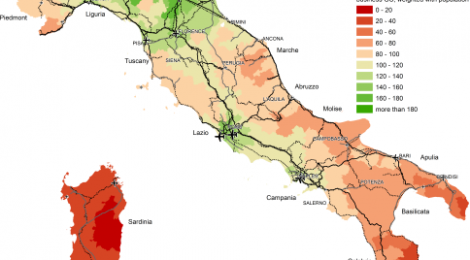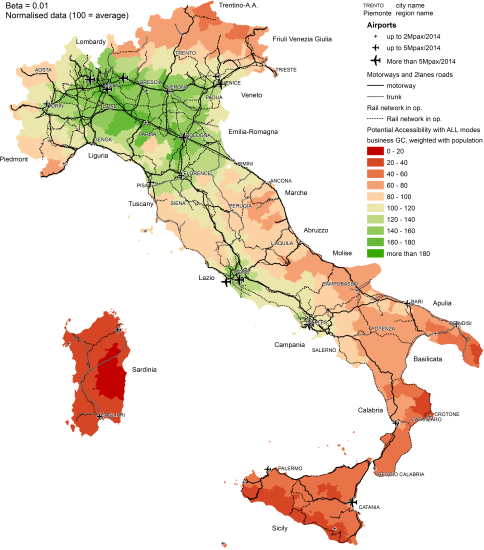
Journal Article: “Measuring the long-distance accessibility of Italian cities” (Beria P., Debernardi A., Ferrara E.)
A new article, written in collaboration with Andrea Debernardi and Emanuele Ferrara, is available for the Journal of Transport Geography.

The paper is based on the multimodal transport model i-TraM developed jointly by TRASPOL and META Planning Srl and used in the research project QUAINT. It studies the accessibility of Italian territory with a high level of detail (371 zones) through a potential accessibility measure. Differently from similar studies, this one gives a more in-depth definition of impedance parameters through a detailed measure of generalised costs for the entire Italian long-distance supply (roads, coaches, long-distance rail services, air services, and ferries). The main output consists in detailed maps of accessibility that are significantly more realistic than using simple infrastructure indicators or single-mode measures.
It results that Italian geography of accessibility is highly complex. High accessibility areas are the highly populated north, but also Rome and Naples, forming a sort of dipole. The effect of main infrastructure is well visible, rising the accessibility of the main corridors with respect to peripheral areas. Southern Italy is by far less accessible than the north due to the combination of geographical remoteness, lower population and of underperforming transport networks. However, the condition of inaccessibility is not homogeneous in all Southern Italy, as well as not all North is highly accessible. For example, Naples performs like Northern cities, despite its geographical disadvantage, thanks to excellent road and rail connections.
This fact is important in terms of transport policies. Comparing a distance-based accessibility with the cost-based one, we showed that Italian transport system is effective in reducing the natural geographical differences, making “far” places relatively less inaccessible and at the same time smoothing the relative advantage of core areas. This is the outcome of transport policies of the past which, far from being perfect, aimed at providing a relatively fair level of supply in most of urban areas of the country.
The article is available to subscribers of the journal at the followig link:
http://www.sciencedirect.com/science/article/pii/S0966692316303301
If you are not subscribed, do not hesitate in contacting us for a personal copy.




